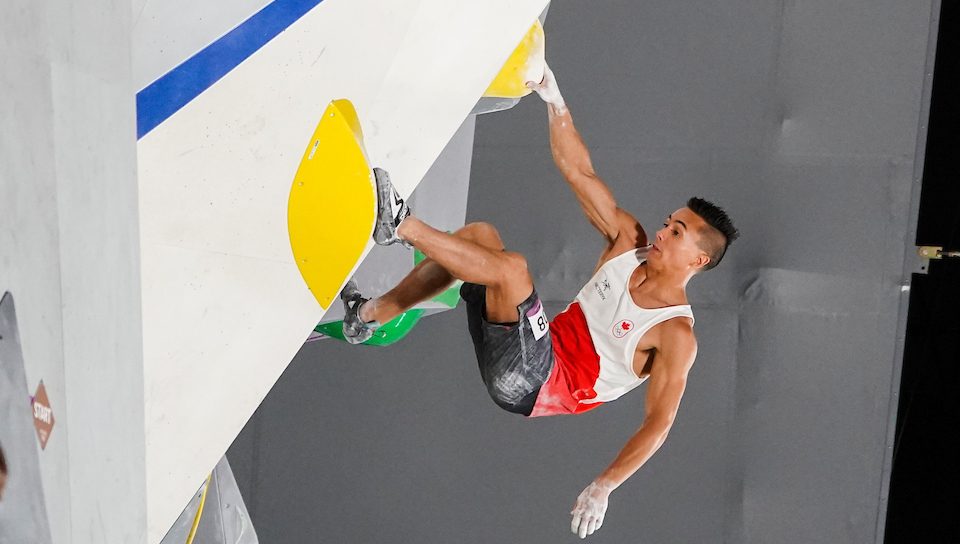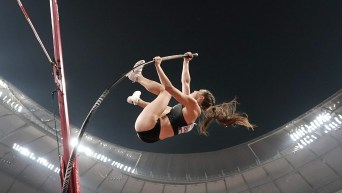Sport Climbing
Sport Overview
Sport Climbing at Paris 2024
Venue: Le Bourget Sport Climbing Venue
Competition Dates: August 5-10 (Days 10-15)
Events: 4 (2 men, 2 women)
Sport climbing made its Olympic debut at Tokyo 2020 where all three disciplines were included in a combined event. For Paris 2024, speed will be a standalone event while boulder & lead are featured in a combined event. Strength, flexibility, careful advance planning, and decisiveness are all key to success.
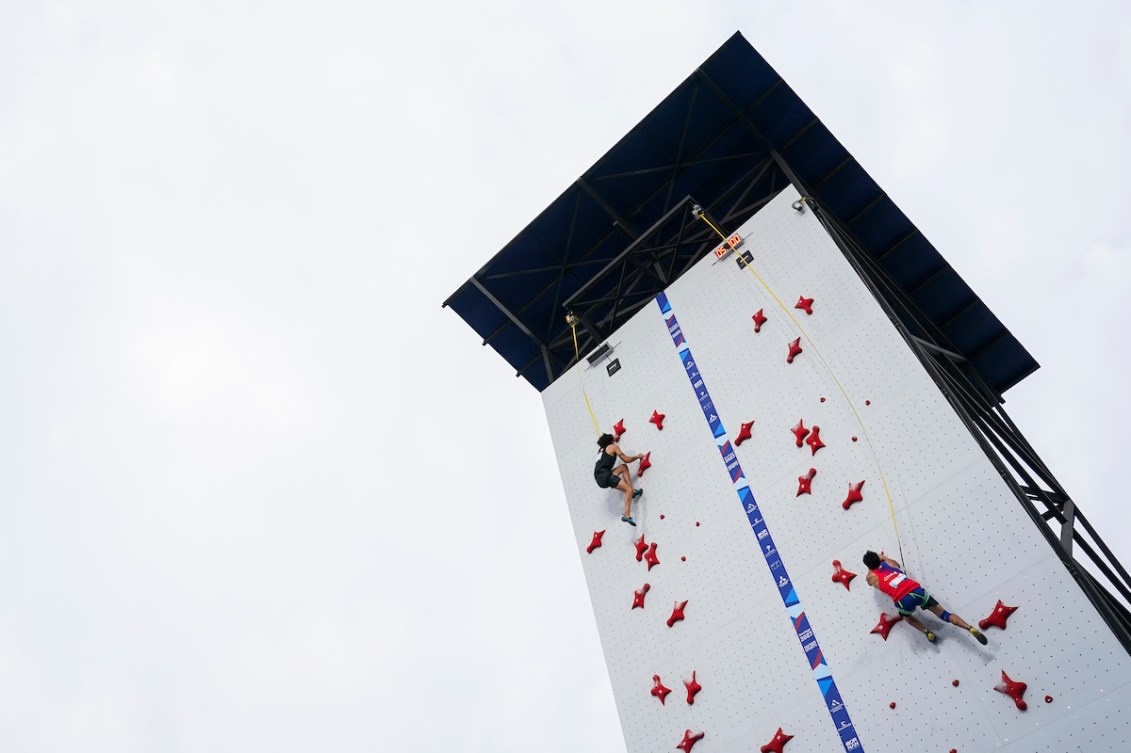
In speed climbing, competitors scale a fixed route on a 15-metre high wall set at a 95-degree angle as fast as possible. The competition begins with a qualification round in which each athlete races once on each of the two lanes. Their best time is used to seed them for head-to-head elimination races between two competitors. The fastest to the top of the wall in each head-to-head matchup moves on to the next round. This continues until the winners of the two semifinals race for gold and silver in the big final while the semifinal losers race for bronze in the small final.
To begin, climbers are secured with safety ropes and harness. At the starter’s command of “at your marks”, each climber places both hands and one foot on their preferred starting holds with the other foot on the starting pad on the floor. Once motionless, the starter announces “ready” and initiates the timing system. The timing system sounds three beeps, the last of a higher pitch that signals the climbers to start. While reaction time is key, a false start will result in disqualification. At the top, they hit a timing pad with their hand to stop the clock. The quickest men will usually finish in five to six seconds while winning times for women tend to be seven or eight seconds.
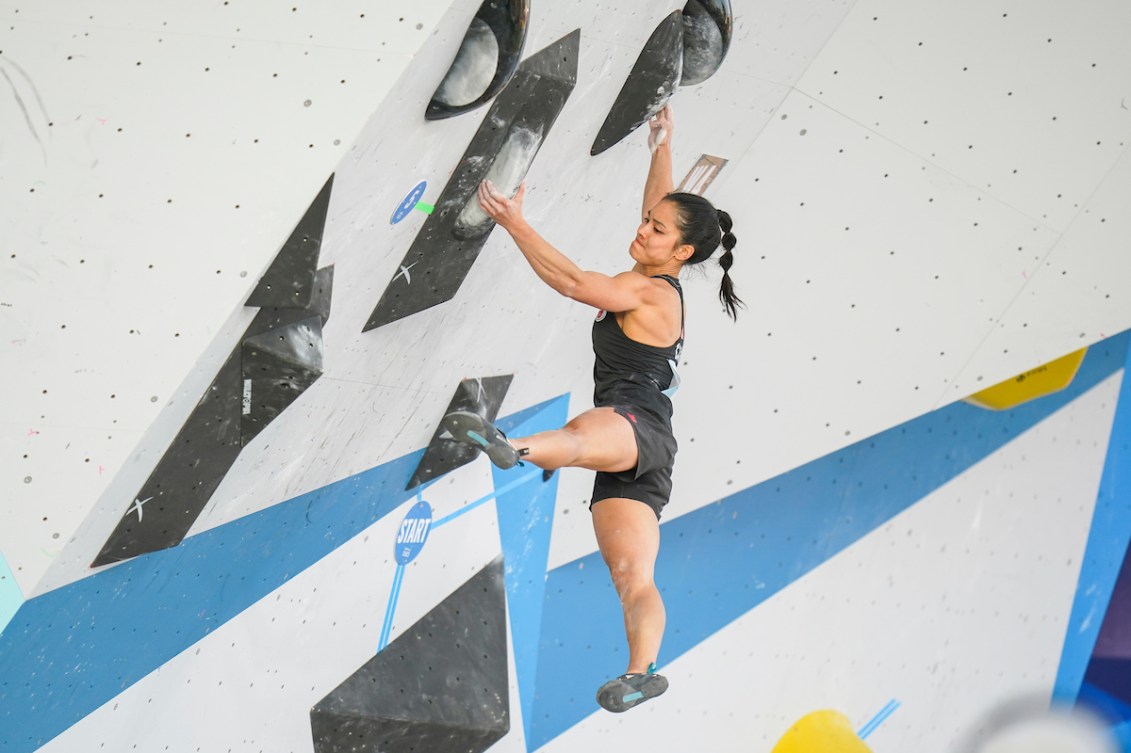
In bouldering, competitors scale as many fixed routes on a four-metre wall as they can within a four-minute time limit at each boulder. The routes have varied levels of difficulty, with a maximum of 12 handholds but usually between four and eight. At no time is a climber more than three metres above a landing mat, so no safety ropes are required. Climbers can try a route again if they fall during their initial attempt. A route is completed when the climber grabs the final hold with both hands. Among the challenges in bouldering are the overhangs and holds so small that climbers can rely only on their fingertips. Points are awarded based on how close to completion a climber is on each boulder.
In lead climbing, competitors scale as high as they can on a wall that is at least 15 metres high and three metres wide within a six-minute time limit. Climbers are secured with safety ropes that they attach to quickdraws at various protection points along the route. The climb is complete when the rope is attached to the top quickdraw on the wall. A climber has only one attempt, so if they fall, the height they reached is recorded. The points for the height achieved are added to those from bouldering to determine the final results for the combined event.
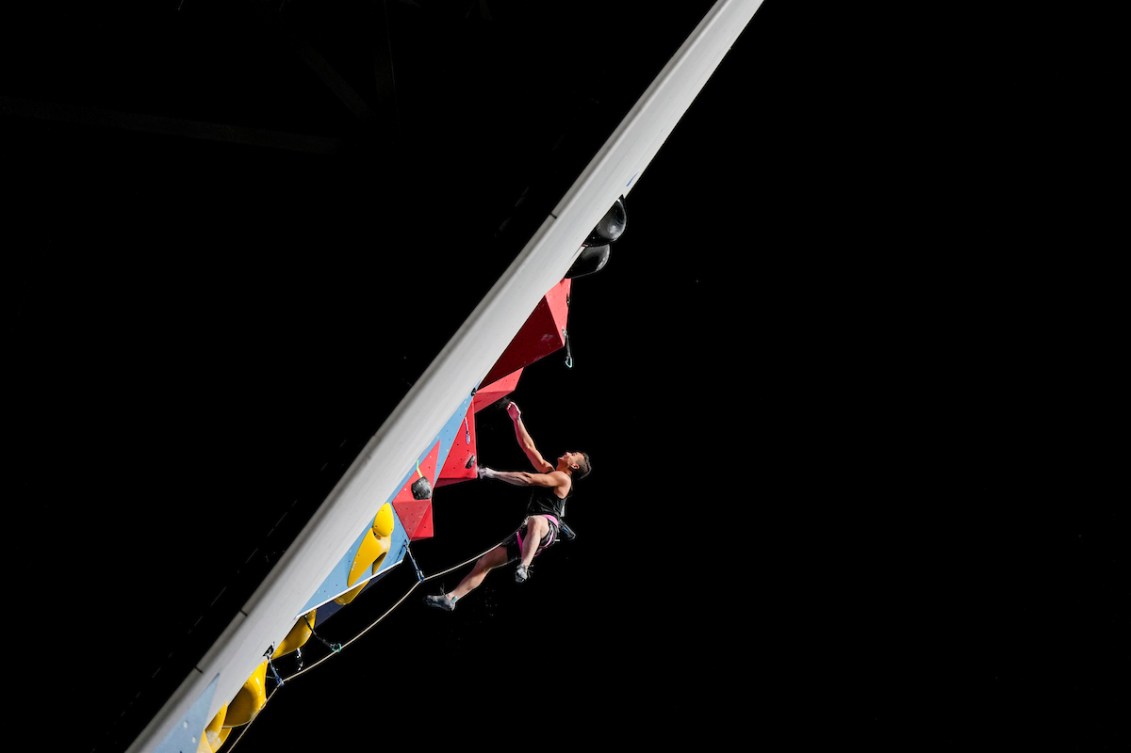
In bouldering and lead climbing, competitors are not allowed to practice on the walls. To prevent late-starting athletes from gaining an advantage on those who compete earlier, climbers are not allowed to watch each other navigate the wall. Before the start of competition, there is an observation period during which climbers can touch the first hold(s) without taking both feet off the ground. In lead climbing, they can use binoculars to view the route and make hand-drawn sketches and notes.
History of Sport Climbing
Climbing as a competitive sport dates to the 1940s when events focused on speed climbing were held in the former Soviet Union. Sport climbing began to gain more international appeal four decades later, notably when an event called “SportRoccia” was held in Bardonecchia, Italy in 1985. This was the first organized lead climbing competition and launched a new era of sport climbing. More than 10,000 people watched the finals of the second SportRoccia in 1986. That same year, the first indoor climbing event was organized near Lyon, France, providing a glimpse of the sport’s future.
By the early 1990s, it was decided that international events would be contested only on artificial walls to eliminate potential environmental impact. The first World Cup in speed and lead climbing took place in 1989, followed two years later by the inaugural edition of the now-biennial world championships in Frankfurt, Germany. After bouldering was officially introduced as a climbing discipline in 1998, the sport continued to grow and today more than 80 countries participate in climbing competitions.
The International Federation of Sport Climbing (IFSC) was founded in January 2007 and was granted provisional recognition by the International Olympic Committee later that year. Definitive recognition by the IOC came in February 2010. In 2014, sport climbing was a demonstration sport at the Summer Youth Olympic Games in Nanjing, China. Two years later, it was added to the official sport program for the Tokyo 2020 Olympic Games.

